At what point exactly does “beginners luck” fade away?
Recently I’ve decided to make the leap and get my private pilot’s license! What follows is the third in a series of flight lesson journal’s detailing the process of getting my private pilot certificate. To read part one, click here. For part two, click here.
I woke up this last Sunday with a smile on my face, counting down the hours before my flight lesson that afternoon. I had a great breakfast, got some time in at the gym, and felt like I was walking on sunshine until the moment I got in the 1975 Cessna 172m.
Who needs a pre-flight checklist anyway? Apparently, me.
My flight instructor Sarah had literally just landed with another student a few minutes before my lesson was supposed to start, and because winter was eating away at our daylight, she decided that to save time we would hop in without completing a pre-flight check. I didn’t anticipate that bothering me at all, but as soon as we started taxiing everything felt wrong. I couldn’t even remember which part of the pedal was the brakes and which part was the rudder; I was struggling to grasp the simplest of tasks. After navigating around a Pilatus and a small private jet parked directly in the way of the fuel pump, Sarah and I grounded the plane, swiped the gas card, and hopped up on the side of the fuselage to fill her up before our lesson.
I remembered that you’re supposed to put the nozzle about an inch past the rim, toward the back of the hole, and wait until the fuel sounds like its gurgling underwater, but I guess I couldn’t hear the difference. I overfilled the left wing and watched the light blue Avgas dribble across the white wing and drip onto the asphalt. Immediately my stomach flopped. Is the gas going to strip the paint? Am I going to have to pay for it to get repaired? Should I just not tell her? I shook my head and handed Sarah the heavy nozzle, holding my tongue for half a second before owning up to my mistake. I prepared myself for the worst.
Starting off on the wrong foot
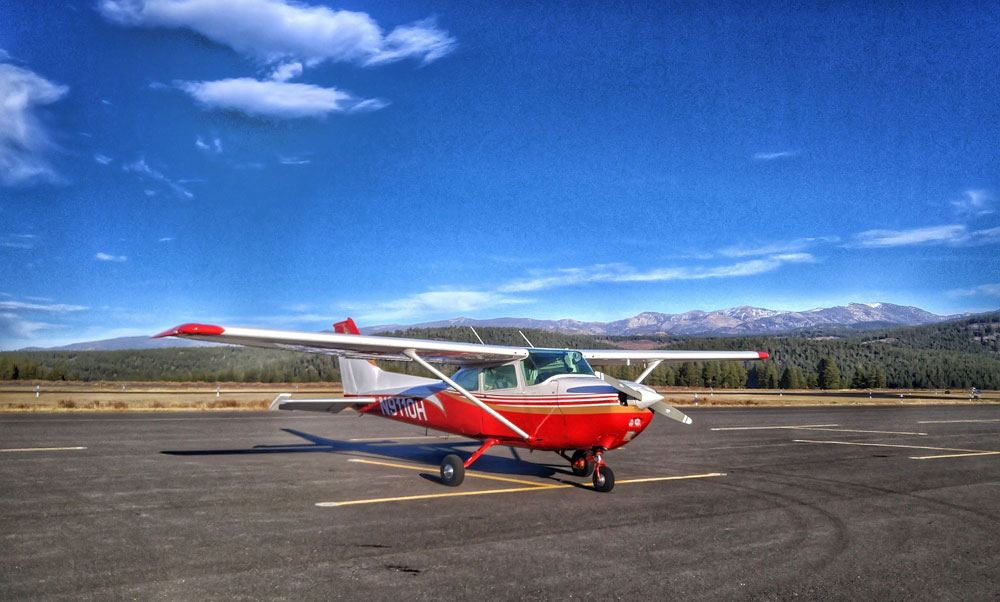 She laughed and brushed it off, saying, “You didn’t even overflow it that bad!” and “It happens, don’t worry,” but the damage was done; self-doubt had already crept in, and I would soon learn that there’s no room for that in the cockpit.
She laughed and brushed it off, saying, “You didn’t even overflow it that bad!” and “It happens, don’t worry,” but the damage was done; self-doubt had already crept in, and I would soon learn that there’s no room for that in the cockpit.
I successfully filled the other wing without any overflow by holding the trigger for a few seconds, then pulling it out and visually checking the fuel level. It took a while, and by the end, my face was more than a little red. It brought back an embarrassing memory of failing to pump gas (for the first time) into my mom’s car when I was 14 and thought I was grown up enough to do adult things on my own, like fill up my mom’s gas tank with my first paycheck to thank her for driving me back and forth to my first job for the last couple weeks. After fumbling at the gas pump for a while, a young man who worked the register at the Chevron I was at came out and pumped my gas for me. It was as mortifying to my tweenage self then as this Avgas escapade felt now. I just wanted to hide in the orange-carpeted storage compartment while Sarah flew the plane instead.
We hopped back into the cockpit, where I couldn’t even buckle my safety belt with ease. Once I finally secured myself into the pilot seat, I again failed by struggling to plug in the loaner aviation headset I had to borrow. I imagined what could have been going through my instructors head while she silently watched me attempt to plug in the headset jacks blindly while simultaneously struggling against my safety belt, unwilling to undo it and go through the hassle of fitting it and securing it all over again: “Have I updated my advanced directive recently? Maybe I should just retire now.” I felt as though I could see the sun setting as my clumsy, nervous hands continued to betray me, wasting Sarah’s time and my money.
“There’s no such thing as a natural-born pilot.” Chuck Yeager
Once that ordeal finally ended, we were rolling toward the runway. If there was one success in this entire lesson, it was that I was able to keep the nose of the plane in the same general area as the yellow line I was supposed to follow.
We positioned ourselves in the little “hold short” area off to the side at the end of the taxiway and went through the pre-take off checklist. It felt entirely alien. I didn’t know where anything was, didn’t recognize any of the gauges, and every other thing Sarah asked me to do or check sounded as familiar as a dead language I’ve never studied. Was I supposed to know this stuff? Was I supposed to have finished my online ground school by now? What the heck is a Hobbs/Tach? Did I ever learn this or did I just forget it? I felt like an idiot.
My only hope was that once we left the ground it would come flooding back. That was not the case.
Fighting my nerves, and losing
For the first time, as co-pilot or passenger, private or commercial flight, when the tires left the runway my stomach dropped and remained on the tarmac, waving goodbye as I flew off to further embarrass myself.
My first thought when Sarah handed the controls over to me was that it must be a lot windier outside than it was last time. I said, “It feels weird today, is it pretty windy?” Cautiously, Sarah responded, “No, it’s actually quite calm today,” which immediately made me feel worse. What was I doing wrong?
We completed a series of simple maneuvers over marshy farmland somewhere between Truckee and Reno- climb to 7,500 at 70kts, aim for that tree and descend toward it while the engine is idling, turn this way this fast, that way even slower, bank to the left at 60 degrees, climb, descend, level out, climb, descend, level out. I felt like I was flying a paper airplane with a mind of its own, struggling to coerce the Cessna 172 into maneuvers I had successfully done less than a week before. I found myself questioning man’s audacity to believe we could exist in this element, to believe that humanity could master the forces of the wind and sky and wrestle them into submission.
Despite Sarah’s reminders, I apparently could only alternate between too much right rudder and not enough to balance the training planes inherent imbalance, which had us yawing back and forth through the sky like a drunken bird. Sarah could tell from my noticeable lack of jubilance and my white-knuckled grip on the yoke that something was amiss, but despite her best efforts, no amount of deep breaths were able to calm my mind, so I tugged on a forced smile and continued to try and find some small amount of assurance that the plane wasn’t going to crash. Or rather, that I wasn’t going to crash it.
The sun sets over another day at the airport
When dusk began its rapid approach, we turned back towards the Truckee-Tahoe Airport, the bald white ski runs on the surrounding mountains pointing us directly toward the runway. Sarah took the controls and demonstrated the rectangular traffic pattern I should follow, and briefly mentioned the adjustments pilots had to make due to the noise abatement rules. After some radio chatter (during which I tried to identify Whom she was talking to, Who we were, Where we were, and What we wanted, for future reference) we approached for a landing, with Sarah still at the controls. As we dove toward the runway and touched down at the precise location she had pointed out, I felt relieved that we would be landing, which broke my heart.
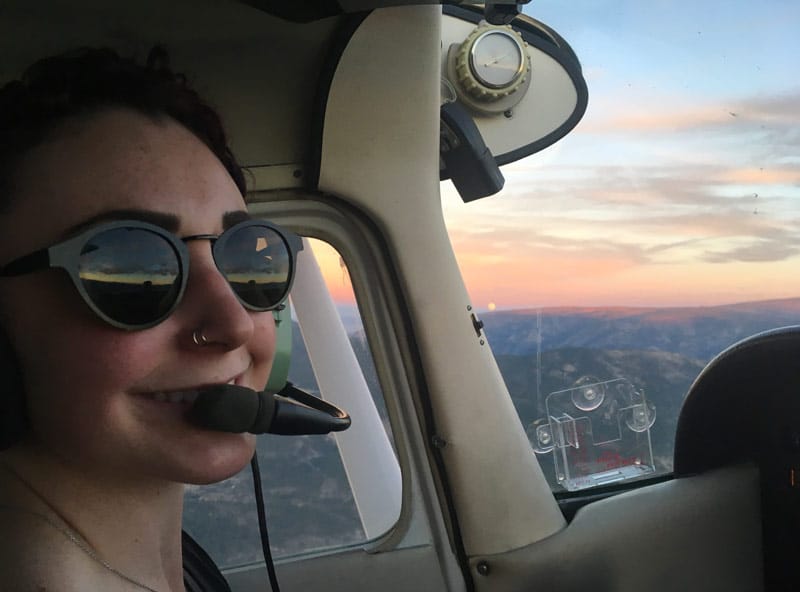
Luckily, nothing in life is so simple, and after pushing the throttle in and pulling up, we were back up in the air, and it was my turn to fly the traffic pattern and land the plane. As we traveled around the airport and began to prepare for a true landing, Sarah said something that finally helped me understand how to use the trim tabs. “Think of it like you’re stacking bricks on the nose of the plane,” referencing the downwards motion you’d use to set the tabs to relieve control pressure when your nose wants to climb. Feeling as though something “clicked” was such a gift after an hour and a half of feeling like a useless fool.
As we flew the last leg of the traffic pattern parallel to the runway, Sarah instructed me to click the mic button seven times fast. I did so, and watched as the lights dotting the runway suddenly came to life. It was gorgeous. The bright white lights twinkled against the dusty blue haze the sunset had left behind while we practiced our pattern, illuminating the natural beauty of the Sierra Nevada Mountains and our little alpine airport.
I lined us up with the runway, pointed the nose between the big 2-9 and the two white landing markers, and started to bring us down. The closer I got to the asphalt, the more nervous I became, and we started heading more and more off-center. Trying to correct it simply made it worse, and just moments before touchdown Sarah had to take the controls. I failed again.
Hurtling down the runway, I found myself trying to control the yoke, the rudders, and the brakes in a desperate attempt to do something right. As I finally got us positioned (with no small amount of Sarah’s help, I’m sure) a gasp from the co-pilot side of the plane made my heart jump into my mouth.
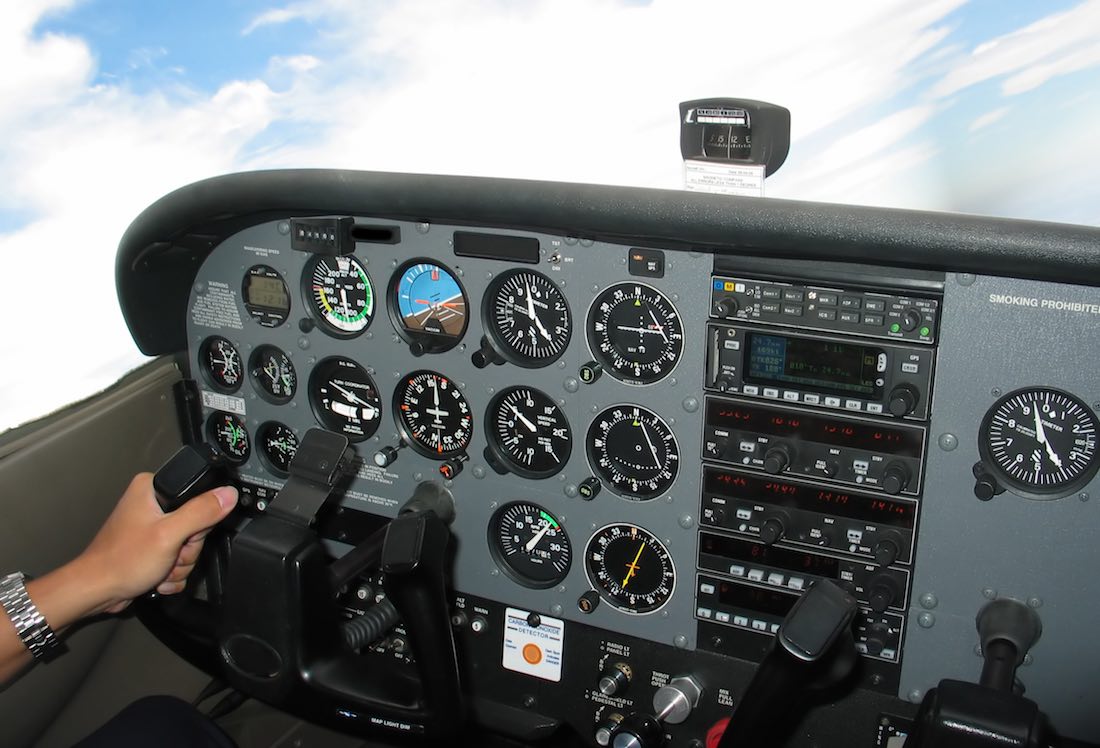
There are many ways to go about earning your private pilot certificate. I didn’t go for mine until I had nearly 1,000 hours of flying time. Since my husband let me fly most of the time we were in the air together, I didn’t bother, frankly. If I had it to do over again, I wouldn’t repeat this method, since all that time is unloggable. And there’s no substitute for the freedom of being able to take the airplane up for a solo flight, at least periodically. But I managed to cram in a lot of aviation adventures before I even had my pilot’s license. Here are a few [Click here to read more…]
Oh, Deer!
“Wow, look at the deer!” Sarah exclaimed, pointing out the window on my side. Painted a deep purple against the dead fall grass, two does and one buck stood frozen, staring at us from the wide swath of land between the runway and the taxiway. Though between the distance and the encroaching darkness, I’m sure neither of us could see each other clearly, I felt as though I locked eyes with Bambi’s mom as we rolled past. Again, the word “audacity” popped into my head as I wondered what would compel jittery, nervous creatures like deer to try and find food in a concrete jungle filled with deafening, roaring beasts flying around at startling speeds.
“They’re either brave or dumb,” I mumbled aloud, more to myself than to Sarah, who was placing a radio call letting other pilots know that there were deer running amok on the runway. As we turned the corner onto the taxiway, the deer lined up as though preparing to dash across our path. We brought the Cessna to a stop, and I jokingly asked if the plane had a horn to scare the deer off before they ended up inches from the propeller.
Brave or dumb, I’m not done yet
Sarah chuckled and we watched the silly creatures as they eventually decided to make a run for it. We rolled back to the Bravo hangars and put the little plane to bed, chocking the tires, plugging in the engine, and tucking her into the army green flannel sleeping bag tossed carelessly on the floor. After making our way back to the Sierra Aero Flight School office (the people hangar, as I like to think of it), we sat down and talked about Fitness for Flight, Bottle to Throttle, the whole nine yards of bad decisions people tend to make as pilot, and scheduled my next two lessons. As much as I wanted to in the moment, I wasn’t going to give up that easily.
In fact, a lingering suspicion I’d felt in the back of my head moved to the front, and I decided to entertain it: maybe I should stop trying to fight the elements and just embrace the chaos? Who needs straight-and-level flight when you can be a stunt pilot instead? I laughed off that overly optimistic thought and determined that next time, I was going slow things down, and have a successful flight, no matter the difficulties. I mean, pilots take off against the wind, right?






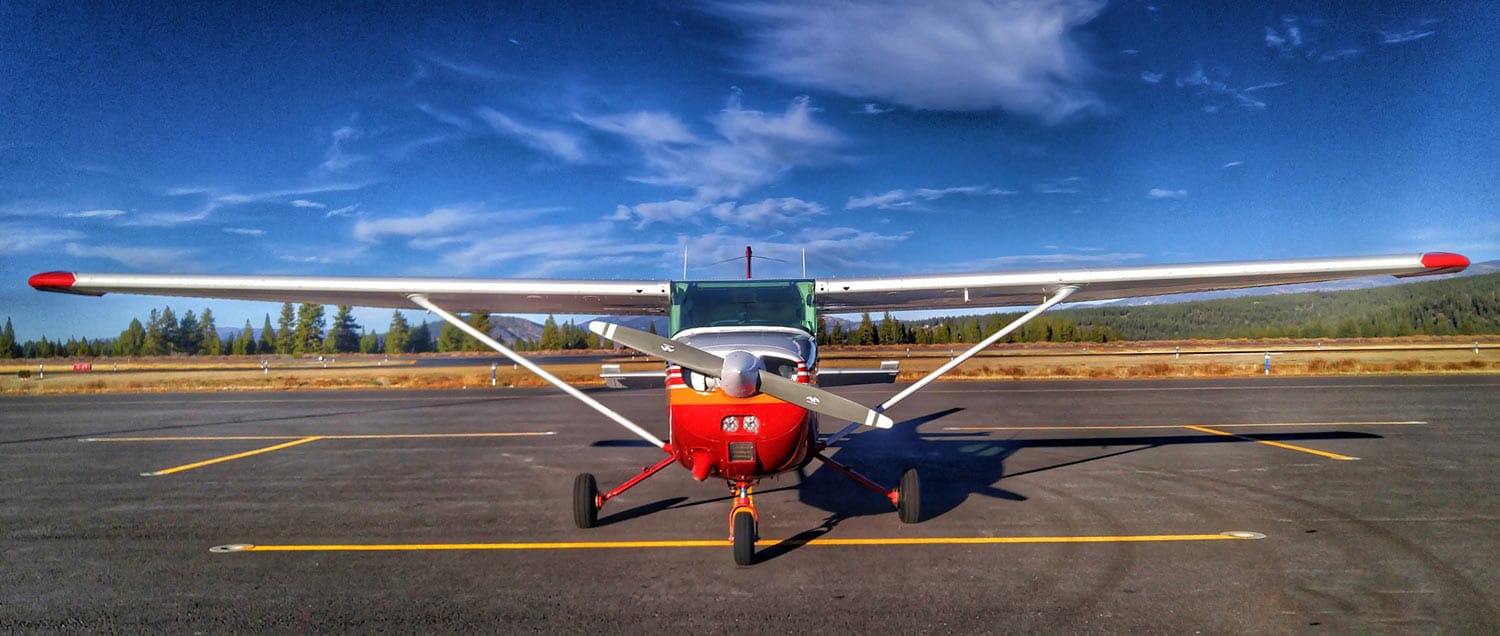







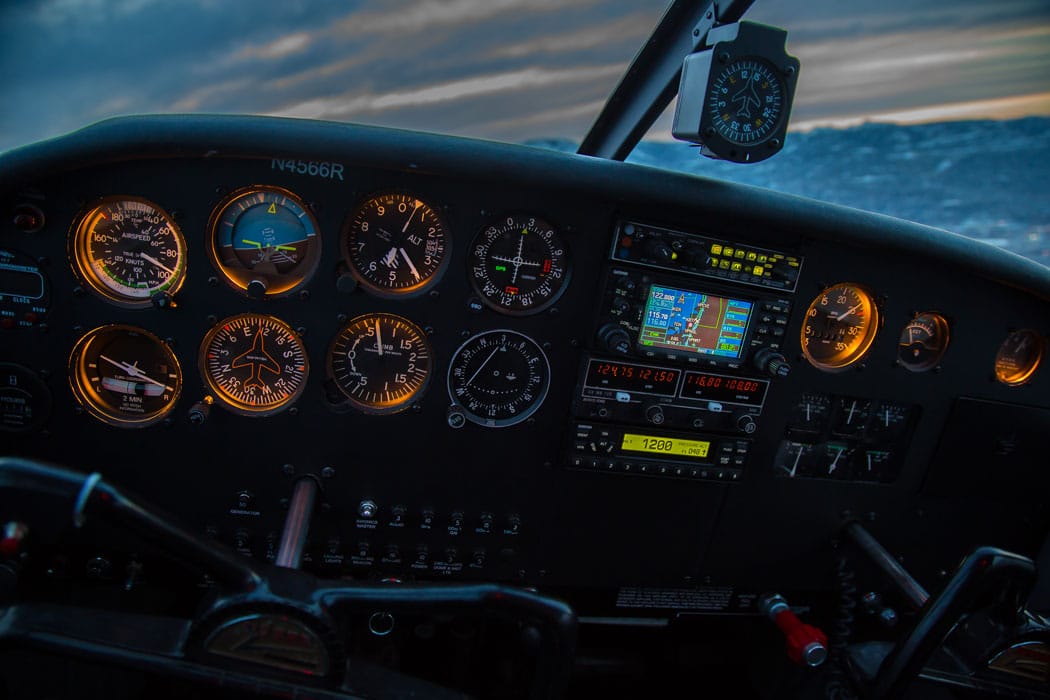
Carly, you may be interested to know that what you experienced also affects licensed and experienced pilots too. We are creatures of habit, and when in an unfamiliar environment, following those habits provides reassurance and comfort. When the usual habit of pre-flighting the airplane was broken, it upset your routine, and because you are new to all of this it cascaded forward, affecting everything that followed in domino fashion.
Now, I’m not saying that there was anything wrong with not performing the usual pre-flight. Sarah had just landed and had most likely checked the plane out thoroughly prior to that flight, but you as Pilot In Command (to be) have the authority and responsibility to determine for yourself, that nothing changed during her flight. That no fastener came loose, no oil began to leak, no alternator mount loosened… No responsible flight instructor would criticize you for insisting on a pre-flight on an airplane that you are about to go fly. I’m sure that late or not, Sarah would be OK with that choice.
As to the rest; well, we all have those days, but I think the important lesson from this is the effect that something seemingly simple can have on your mental state. As pilots we have to recognize when something isn’t right, with our equipment, our environment, or ourselves. It would have been perfectly appropriate to tell Sarah that you weren’t feeling right, and maybe take a moment or two to relax and re-focus, or heck, maybe call it a day and try again next time. Certainly Sarah would have been able to help if she understood what was going on, but what I want to point out is that this was a tremendously successful lesson! You have experienced what it’s like when things “just don’t feel right” in the cockpit. When you’re on your own, that internal voice will help to keep you and your passengers safe. Don’t feel like you have to be strong in the face of this uncertainty, rather do what is necessary to find out what’s wrong. That little voice seldom lies. If you determine that it’s just nervousness because something is new but you know it is a safe situation, then consider it a challenge. If the safety of the situation is uncertain, then stop and reassess what you’re doing. It’s always better to be on the ground wishing you were flying, than in the sky wishing that you were on the ground.
Stepping up to a challenge is something we do in pilot training every day, and once we have our licenses we continue to stretch our boundaries. You now have a valuable tool to help stretch them more safely.
Thanks for sharing your flying with us. You’re doing great.
John, thank you so much for your wonderful comment! I really appreciate the insight from an experienced pilot, and the advice for the future. I’m realizing more and more how important routine is to pilots; it can really mean life or death, even if it’s just a state of mind. Sarah is a great instructor, and perhaps if I had spilled the beans and let her know how uncomfortable I felt (and why), it may have been a different situation.
I find it difficult to think of myself as a pilot-in-command-in-training, especially in the cockpit, but you’re right when you say it’s important that I own the situation and take responsibility for it, and do what I need to do to have a safe, learning experience.
Thank you again, I can’t really express how comforting and helpful your advice was! Hopefully I’ll have a happier, more confident flight lesson to share with you next time 🙂
Carly,
I want to echo something John said: ALWAYS listen to that feeling that something is not right. This feeling should snap us to attention, and we should never talk ourselves out of it. Let me give you two examples: one innocuous and one scary. I am an instrument-rated commercial pilot with over 100 hours in a Bonanza I co-own, and thus am very familiar with this aircraft. Both of these stories happen in this plane.
I was conducting my run-up, and just felt that the engine did not seem right. I had no objective indications that anything was wrong as all checks were normal and typical (verses normal range but not typical for the specific plane). This had me thinking, but I concluded that it was most likely that I have recently had to change headsets. Popping out my ear piece and running the engine back up bolstered my theory, but since my concern was raised I took extra care to plan my takeoff and emergency brief. All went without a problem. The extra time I spent on this was worth it.
The second one is more scary. I was flying instrument approaches in IMC, and was cleared to descend to join the approach. In my plane, the altitude hold engage/disengage button and the autopilot disconnect button are very close together on the yoke. The latter is the one that the pilot might touch normally if working by feel. You might see where this is going. The first thing that told me that I had pressed the wrong button was “this feels wrong,” which alerted me to check my instruments to confirm that I was in a nose-down left turn – the early phase of an unusual attitude. No matter how much I practice this in visual conditions with a safety pilot, it still scares me.
So, ALWAYS listen to that little voice that tells you something does not feel right and do something about it.
Mitch, thank you so much for your comment. As I get further along in ground school (the weather is not cooperating up here in the mountains), I’m realizing just how many tiny things can go wrong without ever attracting the pilots conscious attention. The “this feels wrong” feeling you described seems to be like the most trusty instrument in the cockpit! As a new student, I find myself trying to believe that it only “feels wrong” because I’m inexperienced, but reading encouraging comments from experienced pilots like you and John remind me to hold onto that feeling, and heed it when it calls. The more I learn, the more I realize pilots fly with their gut instincts as much as anything else.
Thanks again for your support and interest in my flight (mis)adventure! 🙂
Yikes. I couldn’t concentrate after you said you both decided to jump into the airplane without a preflight inspection. The only time this is acceptable is if a polar bear is charging you and you have mere moments to get away – or you’re James Bond. Self discipline is the foundation for being a good pilot and deciding to skip the very first step of a safe flight will always set you up for a frustrating day. Thank you for sharing your story – it will help others to stay safe! Cheers to blue skies and jet engines…
Well I’ve always wanted to be James Bond, so that means I’m on my way, right? Ha! But seriously, that was a mistake I won’t be making again.
Thanks for your comment Erika, crossing my fingers for blue skies and piston engines. 😉
Hi Carly,
I enjoyed reading your very well written description of a “challenging” day in flight training. It’s been more than a few years and about 1200 hours since I was in your shoes, but oh how many memories your story brought to my mind! I felt so inept at the beginning that I knew I was wasting every dollar on an unachievable pursuit. I had no idea how other pilots were able to manage such miraculous control over an airplane. Clearly they were supernatural because MY early training aircraft were purely demonic!
After a change of airports, planes and instructors I finally learned to tame the demons, most of the time. On my first cross country flight with my next instructor, I was so nervous that my derrière never touched the seat. My back muscles, neck and shoulders hurt so badly that when we finally landed I could barely walk. It was windy. We had low level wind shear. We were in a Cessna 150. I felt like we were all over the sky and getting slammed by unseen telephone poles. After we finally made it to the second of three airports, I told her I could not continue unless she wanted me to blow my cookies onto the windshield. Ellen was a fantastic flight instructor and she shepherded me through not only that day, but many other moments equally filled with anxiety, ineptness, stupidity, indiscretion and a host of other unpilotworthy traits. In contrast, last month I hand flew VFR from Houston, TX, launching after midnight into an India ink black, moonless sky and landed at 4:45 a.m. on a 2200 foot long grass runway in North Alabama that had unseeable mountains close by on one side and one end. Hold onto those early training memories when everything seemed to go wrong. They will be fond reflections you will one day be able to share with those who are just beginning their entry into the wonderful world of flight. And by all means, finish and fly!
Good morning Tim!
Thanks for your comment! It’s very reassuring to hear experienced pilots like you have had the same experiences, feeling like you can’t go more than two seconds without messing something up. Where did you do your training? Was it generally windy?
Low level wind shear in a Cessna 150 sounds like a nightmare! My very last flight lesson, I battled minor turbulence in a 172 and couldn’t unclench my muscles either! I can’t imagine being tossed around in a lighter, less powerful aircraft.
I’m really excited for night flying, and your description was gorgeous. And don’t worry, nothing in the world could keep me from an airplane now, I want nothing more than to get my certificate and fly as much as I can for the rest of my life. 🙂